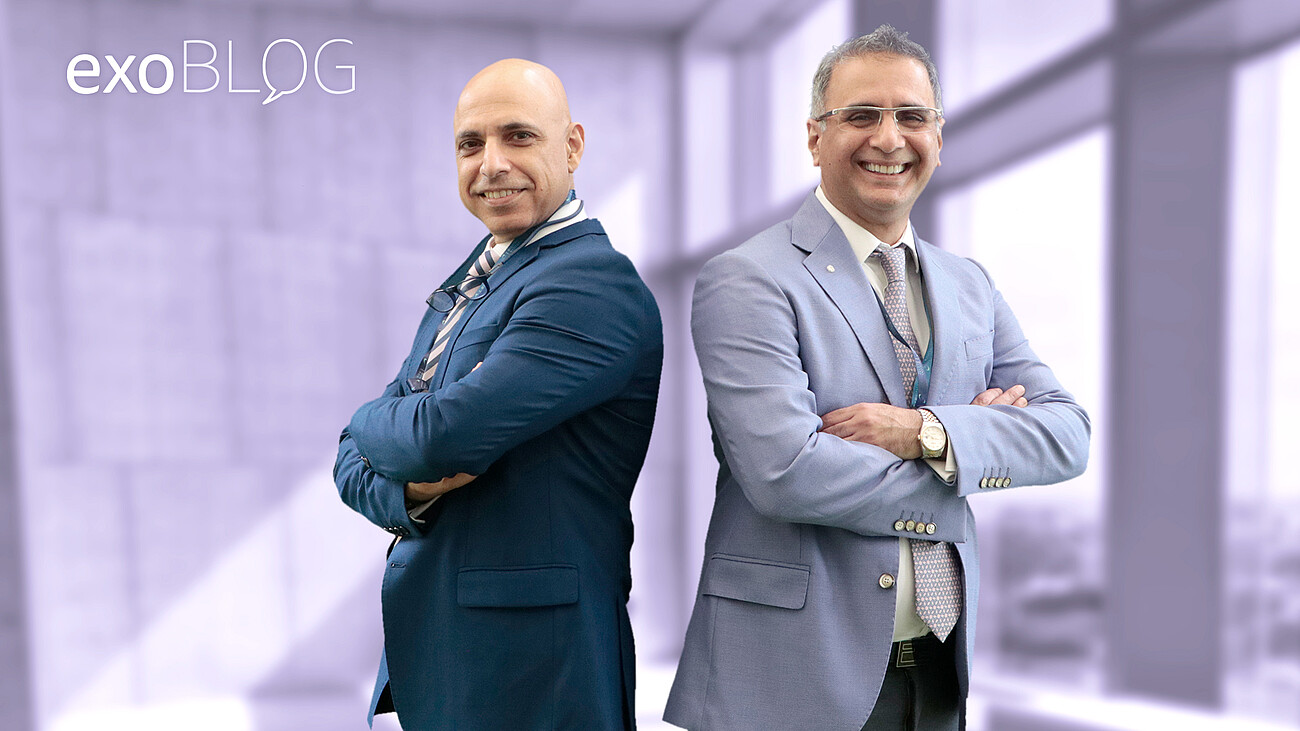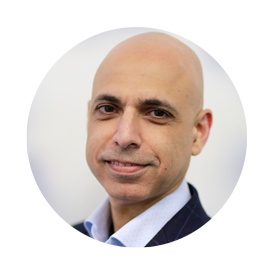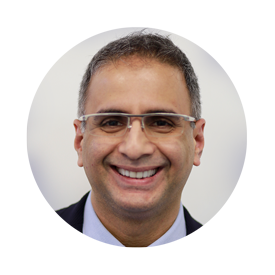Inspiring digital adoption and collaboration in India
What are the keys to good lab-clinic collaboration? Digital workflows and hands-on education, according to the two founders of the Mumbai- based Digital Dental Forum (DDF) , prosthodontist and implantologist Dr. Burzin Khan and lab owner Danesh Vazifdar. Burzin and Danesh share how they developed their lab-clinic collaboration and why they’re both passionate about educating others in the field.
Q: What excites you about digital dentistry?
Danesh: What really excites me is the amount of information we can collect in advance today—things that we can preplan before the surgical phase or before we actually do any treatment on the patient. We have such accurate data to plan things better and faster for the benefit of the patient.
Q: Which exocad software do you use and how does it influence your collaboration?
Burzin: I have been working with Danesh’s lab for a long time, and he was my first point of contact with exocad. What I learned initially was exoplan for guided surgery because we use exoplan to do implant planning together, but I've recently started to discover more about exocad’s software for single-visit dentistry ChairsideCAD.
Danesh: I had used another software before switching to exocad. The first thing that really surprised me about exocad software was that it works with bigger cases. It is extremely intuitive. As a dental technician, if you have not done CAD work before, exocad is probably the easiest software to learn. It’s self-explanatory. There are so many help options and resources to educate yourself. The software always guides you through the next step. That's something I really love about exocad. Once we got our first license, there was no looking back. We are currently at five licenses in the lab and plan more.
“For implant dentistry, exocad has completely changed the way we work. It is extremely intuitive!”
Q: Do you have any favorite modules?
Danesh: For implant dentistry, exocad has completely changed the way we work. It is extremely intuitive! I really appreciate the synergy between exoplan and DentalCAD. We can easily collaborate on the design of custom abutments and full arch screw-retained restorations. exocad gives us the ability to take different scans from pre-operative data to the provisionalization and to plan everything in a constructive and predictable manner.
Burzin: I think the AI works very well. For beginners, like myself, who are newer to exocad, the “next, next, next” buttons are very good. At the same time, the software gives you the option in case you want to improvise.
Q: Tell us more about your collaboration and education project.
Burzin: Since we were early adopters of digital dentistry, we wanted to share our experiences with our colleagues—first in our country and then we slowly expanded to other countries. We formed the Digital Dental Forum in 2018 and conducted a few workshops locally in India, Mumbai and Delhi. Then we took it to an international level and did workshops and training on implant planning and other aspects of digital dentistry in Romania, Egypt and Greece. We saw that there was a lot of demand globally for new dental technology, and people wanted more education. Covid limited our in-person training options so we went online and created a Facebook platform. We started doing online webinars on Facebook using Zoom and gained popularity for our digital education. Last year, we had our first physical symposium in Mumbai. We also started offering membership to our forum and currently have around 200 members.
Danesh: As Burzin said, we were kind of early in the digital field. We would receive a lot of queries about which scanner and software to use. We realized that there is a real need for education in digital dentistry, especially because the market changes so fast. We formed DDF to collaborate and stay current on trends. Companies who are developing new products can showcase their technologies on our platforms, and this way our members stay up to date on the changes.
Burzin: The primary vision behind this education is to improve the patient experience. That's what we are looking at when we go digital—improving patient experience.
Q: Speaking of patient experience, do you have any memorable patient cases?
Burzin: With digital, we can provide services faster and easier than in the past. In fact, we've just formed a protocol of immediate loading with full arches. What we do is a complete treatment therapy, which is pre-planned, prefabricated, everything is kept ready, and then we deliver it all in one shot. The patient never has to look back on another surgical procedure or go through multiple sessions. In fact, we presented it during the European Academy of Osseointegration meeting.
Danesh: I remember a case of Burzin’s. The patient was from Brazil. He had a very compromised situation. Before he stepped into Burzin‘s clinic he had a hard time getting any dentist to take on his case. Previous dentists were not convinced that they could restore him. But Burzin does a lot of work with tilted implants and immediate load. We had the software, the know-how, and we could pre-plan everything. This is something that amazed the patient—that we could show him a digital design. Then Burzin executed the surgery, and I remember him phoning me and telling me that the patient was so emotional just after his provisional. The treatment was quite life-changing.
“What surprises me in India is how fast we've grown digitally and adapted to digital change. Almost 70% of the doctors that we work with today have intraoral scanners.”
Q: How would you describe the market for digital dentistry in India?
Burzin: I think digitization has become a part of everyone's life in many ways, and dentistry is no exception. In India, many are looking for more education on these topics because the field evolves so quickly.
Danesh: What surprises me in India is how fast we've grown digitally and adapted to digital change. Almost 70% of the doctors that we work with today have intraoral scanners. We are doing a lot of digital workflows. That has really grown and continues to year-on-year.
Q: Like many software companies, exocad is making a push to cut down on software piracy. How big of a topic is that for you as software users and educators?
Danesh: I think that using the original software is always safer because whenever you have an issue, you can contact the right people. exocad has resellers. You have a ticket system, you can contact the resellers, you can download original libraries—all this by just putting in your original dongle number. There are a lot of benefits when you use original software, in terms of support and education from the company itself, that I think far outweigh the cost difference between buying pirated and original software.
Q: One word for exocad?
Danesh: Efficient.
Burzin: Inspiring.
Dr. Burzin Khan is a practicing implantologist, cosmetic dentist and prosthodontist with 30 years of experience in the dental field. Burzin completed his master’s degree in Prosthodontics (MDS) at the Government Dental College and Hospital, Mumbai University in 1990. Burzin maintains the multi-center, multi-specialty clinical practice OPUS Dental Specialties at Fort & Bandra in Mumbai, with an emphasis on full digital workflows for immediate implant restorations, same-day teeth protocol, CAD/CAM teeth restorations, digital smile design for smile makeovers with veneers and full mouth rehabilitations. He is a founding member of Digital Dental Forum. You can follow him on Facebook and Instagram.
Mr. Danesh Vazifdar is a partner and technician specialist at Adaro Dental Laboratory, with a focus on CAD/CAM Dental Technology for crowns, bridges, implants and esthetic cases. He is on the faculty program for implant prosthodontics at the Interactive Eduhub Learning with Columbia University College of Dental Medicine and is a founding member of the Digital Dental Forum. Danesh’s cases have been extensively published in the first book published on the socket shield technique called Partial Extraction Therapy in Implant Dentistry. He specializes in full-mouth rehabilitation implant cases and immediate loading solutions using guided surgery and one-time abutment concepts for single-tooth to full-arch implant solutions. You can follow him on Facebook.

by Caitlan Reeg
Writer at exocad
Caitlan Reeg spends her days telling the world about the innovations her colleagues create. She’s passionate about healthcare, technology, and the ways the two interact to improve our lives. A former journalist, Caitlan has worked on staff at Dow Jones Newswires in Frankfurt and at the national public radio program Marketplace in Los Angeles.





